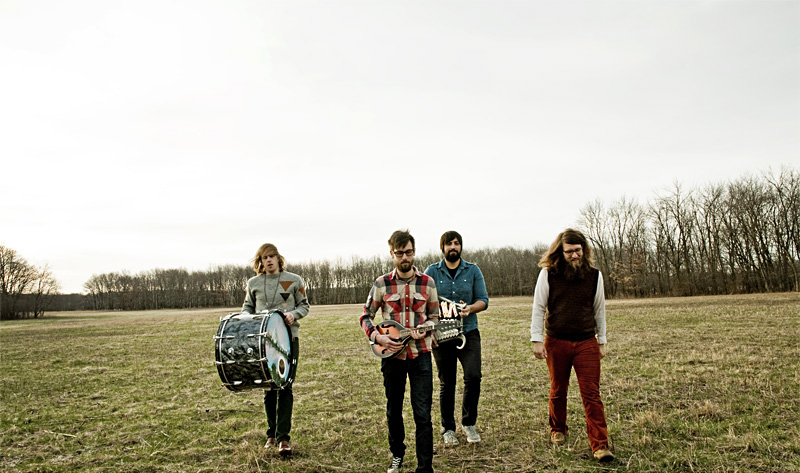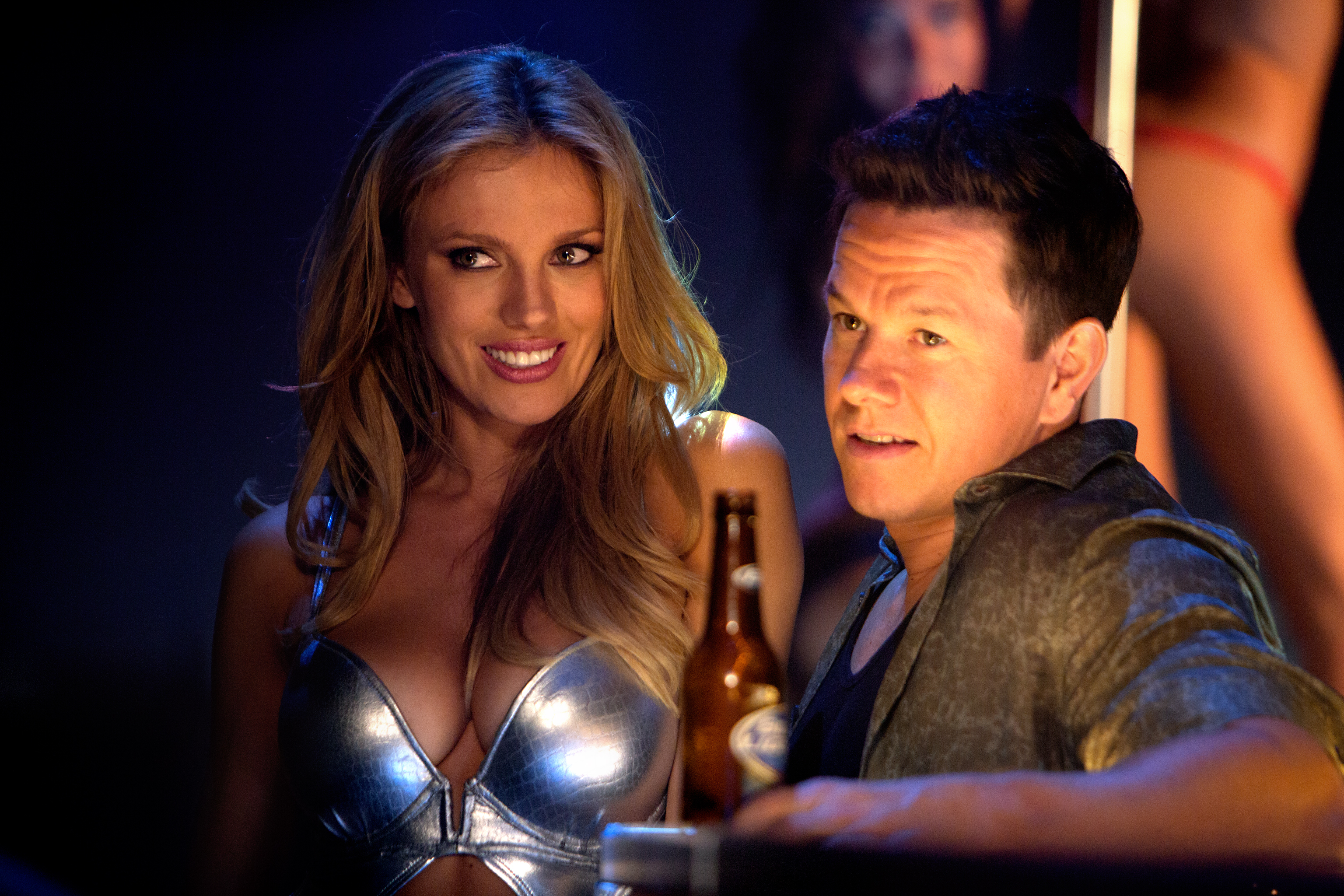When Chris Hainey and Erin Elders left Pewaukee High School in Pewaukee, Wisc., to attend Chicago’s Columbia College, they both had movies on their minds.
“Erin went for a writing/directing focus, and I had interest in cinematography,” says Hainey.
But instead of a movie, they left school with a band called Maps & Atlases. Elders, a guitarist, and Hainey, a percussionist since childhood, recruited bassist Shiraz Dada through an ad they posted around campus, and later a mutual friend referred them to their future lead singer, Dave Davison.
“It was a time when I wanted to be finding out about new music, and I had these people to work through those new concepts with,” says Davison. “We were a blank slate. We went to college, learned new things, and sort of examined them together. It all grew together that way.”
What they began listening to were math-rock influences: Pittsburgh instrumental outfit Don Caballero, chaotic former Suicide Squeeze signees Hella, and experimental San Francisco legendaries Deerhoof—bands that rejected traditional notions of pop music and easy, tired cycles of riffs, choruses, and verses, instead focusing on elaborate instrumentals and unconventional song structures.
“We realized that we were all technically proficient enough to create music like that,” says Hainey. “We wanted it to be based in traditional pop-music structures, and then skew it a little.”
The music on Maps & Atlases’ first EPs— 2006’s Tree, Swallows, Houses and 2008’s You and Me and the Mountain—are swirling, convoluted affairs, nimbly jumping time signatures and defying any of the simple, sweet, radio-friendly song structures that have been the standard for indie-pop bands since Death Cab for Cutie hit it big. Math geeks loved it; the general public was slower to catch on. But when the band toured with New York’s Ra Ra Riot, a band that swings toward the more conventional side of indie rock, they caught the ear of Josh Rosenfeld, founder of Seattle’s Barsuk Records (Ra Ra Riot’s label).
“I’m not a guy who requires music to be complex. I love some really simple, beautiful pop music,” says Rosenfeld. “But in the case of Maps & Atlases, the complexity of their compositions and their arrangements is something that keeps their music exciting to my ear for a long time…I didn’t know when I listened to that music that anybody in the world would think of Maps & Atlases as being a technical band. I just thought the songs were super-good and really interesting and textural. That’s what made me interested in signing them.”
Last month, Barsuk released Maps & Atlases’ first full-length record, Perch Patchwork. The record isn’t a breezy, sing-along collection a la DCFC or the Long Winters, but the new songs do deviate from the band’s math-rock origins and inch toward a poppier accessibility not found on their early EPs. That shift may be turning off some of their hardcore math fans, but Davison says it’s an important step away from the stereotypical math-rock sound.
“When you think about math rock, it’s instrumental and eight minutes long, which is obviously different from what we do,” he says. “We don’t mind the label as long as people can see that we’re also trying to do other things beyond that.”
While techy instrumentals are still present on Patchwork, they’re much subtler, and the songs have an easier pop structure. “Living Decorations” swings along with an infectiously merry beat as the guitars move up and down scales. “Solid Ground” is moody and emotive; a flute and a cowbell play in the background as the song builds to a cacophonous climax, every instrument deliberately placed. In a sense, Patchwork is a merger of math and pop, of complexity and accessibility.
“There are definitely all these crazy arpeggios going on, and two guitars and flute and bass all playing syncopated rhythms,” says Rosenfeld. “But the way they write them doesn’t feel to me at all like they’re complex for the sake of complexity. I feel like Maps & Atlases are interested in making music that is beautiful to listen to.”
Erik Walters and Kyle Musselwhite are the vocalist and guitarist of local four-piece the Globes, a band with a bookish approach to indie rock similar to Maps & Atlases’; their performances are razor-sharp, with acute guitar lines and a heavy focus on the rhythm section. (They’re also managed by Rosenfeld). “The challenge for bands that are really techy is to make their music accessible enough for people to actually like it,” Walters says.
“It’s really easy for a musician to get wrapped up in what they’re doing and how it feels to them and plays out to them in their own head,” agrees Musselwhite. “It’s easy for that to become masturbatory.”
Hainey and Walters both mention Seattle band Minus the Bear (in town Saturday, see the Short List, page 37) in comparison to Maps & Atlases’ math-rock sound. Minus the Bear earned the math label thanks to the jerky rhythms and elaborate guitar noodling on records like 2002’s Highly Refined Pirates and 2005’s Menos el Oso. “The Don Caballero–style riffs kind of blew my mind when I was growing up,” says Minus the Bear guitarist Dave Knudson. But with their newest record, Omni, Minus the Bear has dialed down the complexity of their songs, replacing it with super-polished synths and vocals.
“We moved away from being just a solely math-rock band,” says Knudson. “We wanted to make this record a little more soulful and infuse a little more of a dancy element. We just wanted to progress as a band.”
But Maps & Atlases is using something other than dance beats to bridge the gap between pop and the somewhat mechanical feeling of math—relatable human emotion. “I would love to be breaking new ground,” says Davison, “but most of all, we’re just trying to find new ways of making music that can get an emotional response from people.”
And a band’s technical proficiency further enables them to inject their music with the right feelings. “You have the ability to express yourself on your instrument,” says Walters. “If you want to do a shreddy guitar line that makes sense within the context of what you’re doing, then you can pull it out. Music’s a language, and if you don’t have the vocabulary to express yourself, then you’re going to hit a wall.”
“Songs that are really exciting, that take a different approach, but that you can have an emotional connection with,” says Davison, “those are the songs that change the way all of us think about music.”








